THE SHRILL roar, the instant responsiveness of rising-falling revs, echoes around the huge warehouse.
Except the shriek is totally wrong: no Pontiac Firebird ever sounded like this. Where is the anticipated deep, low-revving burble of a rumbling GM V8, gulping for air through a four-barrel Rochester carby? Clearly, this is no ordinary 1970 second-generation Firebird.
- Earl of Design – Step inside Mike Simcoe’s office
- We follow a HSV GTSR W1 down the production line
- We drop a Mazda CX-3 into the Outback to follow Birdsville’s only cop
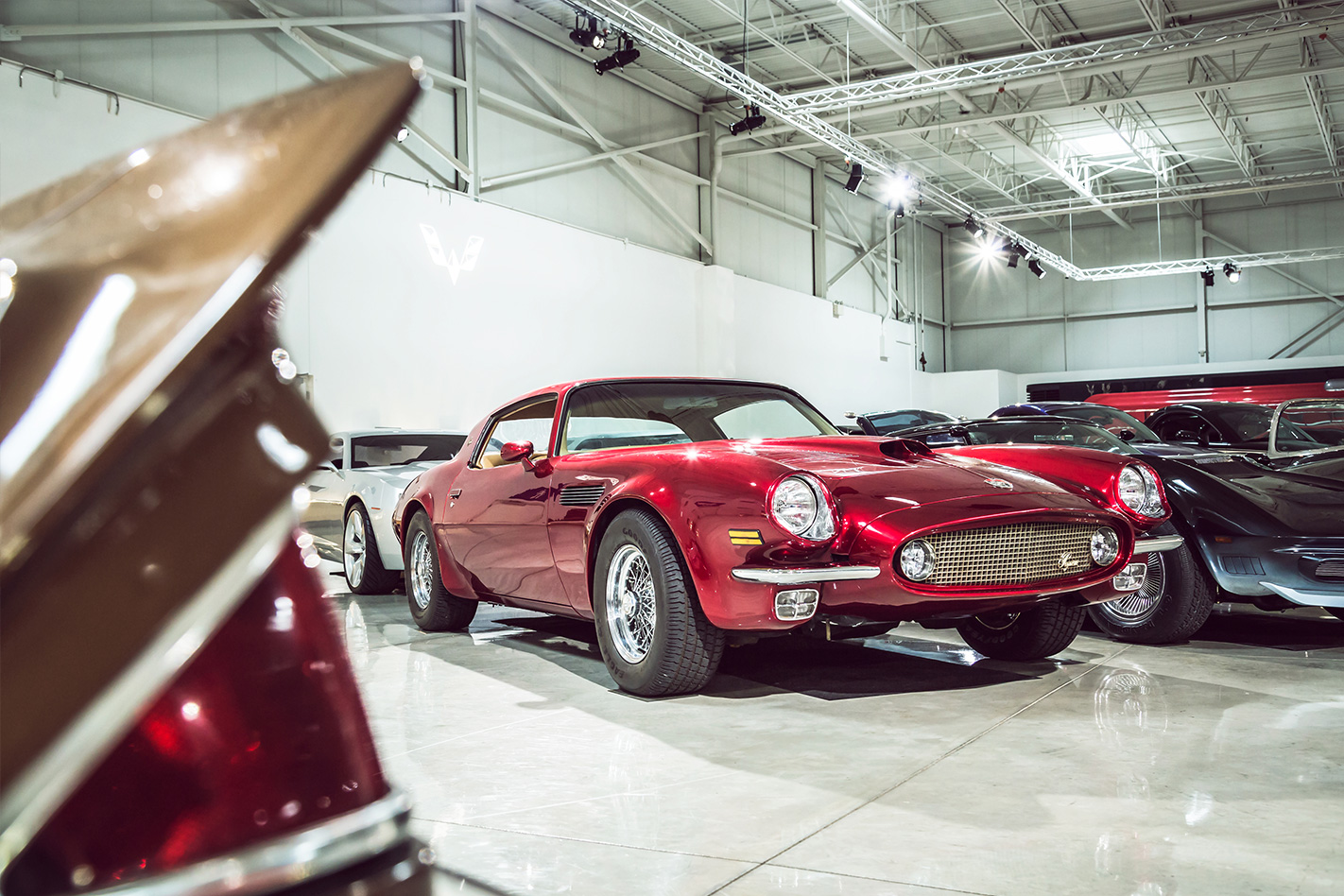
Mitchell used the Pegasus to try some new design ideas for future Camaro/Firebird pony cars. Chevy designer Jerry Palmer’s proposal borrowed the nose of the 1958 Ferrari 250 Testa Rossa for a potential Camaro facelift.
“I did a four-by-two-foot [1200mm x 600mm] sketch early on with a Testa Rossa front end on it,” Palmer told former Wheels editor Angus Mackenzie 10 years ago. “Then Bill Mitchell broke my heart and took it down to Pontiac.”
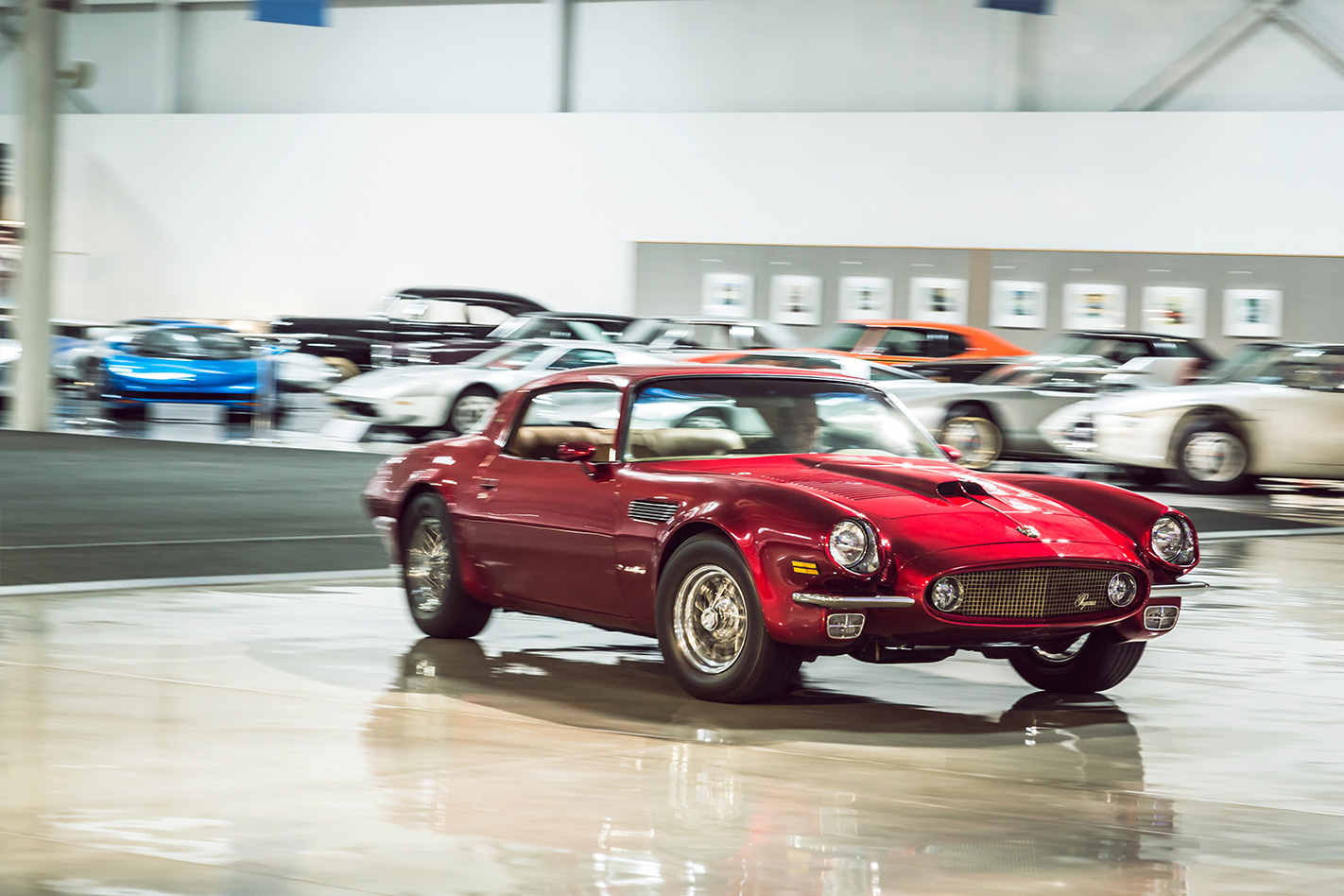
But none of this explains that sound.
Finally, the truth is revealed. In place of the Pontiac 400 cubic inch (6.6-litre) V8, the Pegasus is powered by a 4.4-litre quad-cam Ferrari V12 from the 365GTB/4 Daytona. Pegasus is not a Firebird, more a Ferraribird.
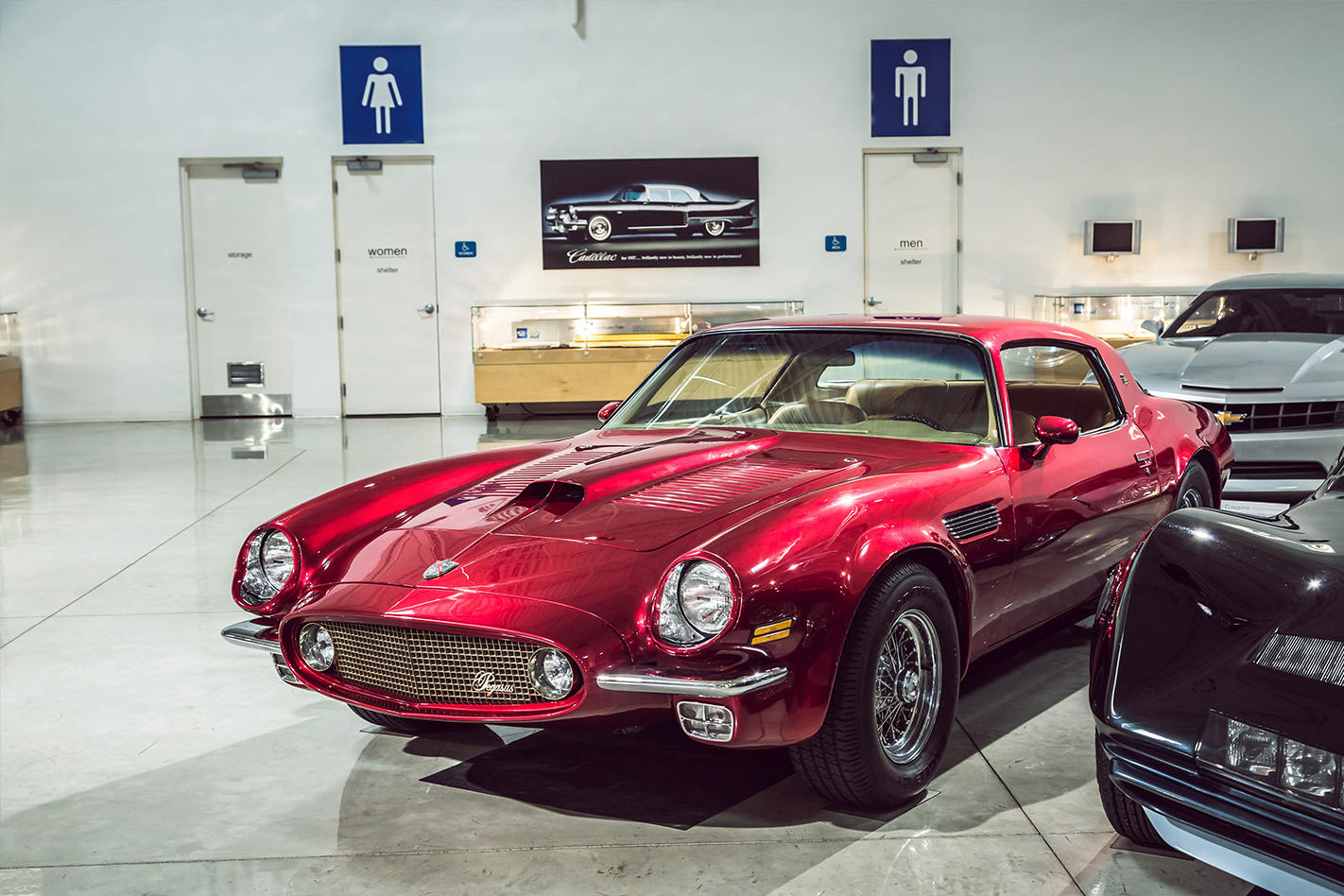
According to GM mythology, the dictatorial Mitchell privately arranged for the engine swap, without telling GM Powertrain. The engine was first coupled to a GM Hydramatic automatic, only for Mitchell to discover the transmission didn’t work happily with the high- revving engine and that the performance wasn’t up to his expectations. Luigi Chinetti, Ferrari’s American distributor and race team owner, installed a Ferrari five-speed manual and, GM folklore has it, brought the engine up to competition standard with bigger Weber carburettors and tweaked cams.
Only then did Mitchell arrange a demonstration to GM’s senior powertrain engineers. Pontiac had dabbled with overhead-cam sixes in the 1960s; perhaps Mitchell wanted to prove a peaky, double overhead cam engine could work in a sporty model like the Firebird. He drove the Pegasus around the Warren R&D campus from Design and stopped in front of the assembled engineers. Continually blipping the throttle, legend says Mitchell shouted, “That’s what a car should sound like.”

GM’s Heritage Center is located, the way many of these places are, in a nondescript warehouse on a side street in a light industrial estate. The only clue as to what is inside is a small GM logo on the front lawn. From an overall collection of around 500 cars, a rotating selection of 150 are on display at any one time. Those cars not on display are held in a temperature controlled warehouse at a secret location somewhere else in Detroit.
Yes, we asked for a list of the cars, but Greg Wallace, manager of the Center, says GM doesn’t share the inventory with outsiders.
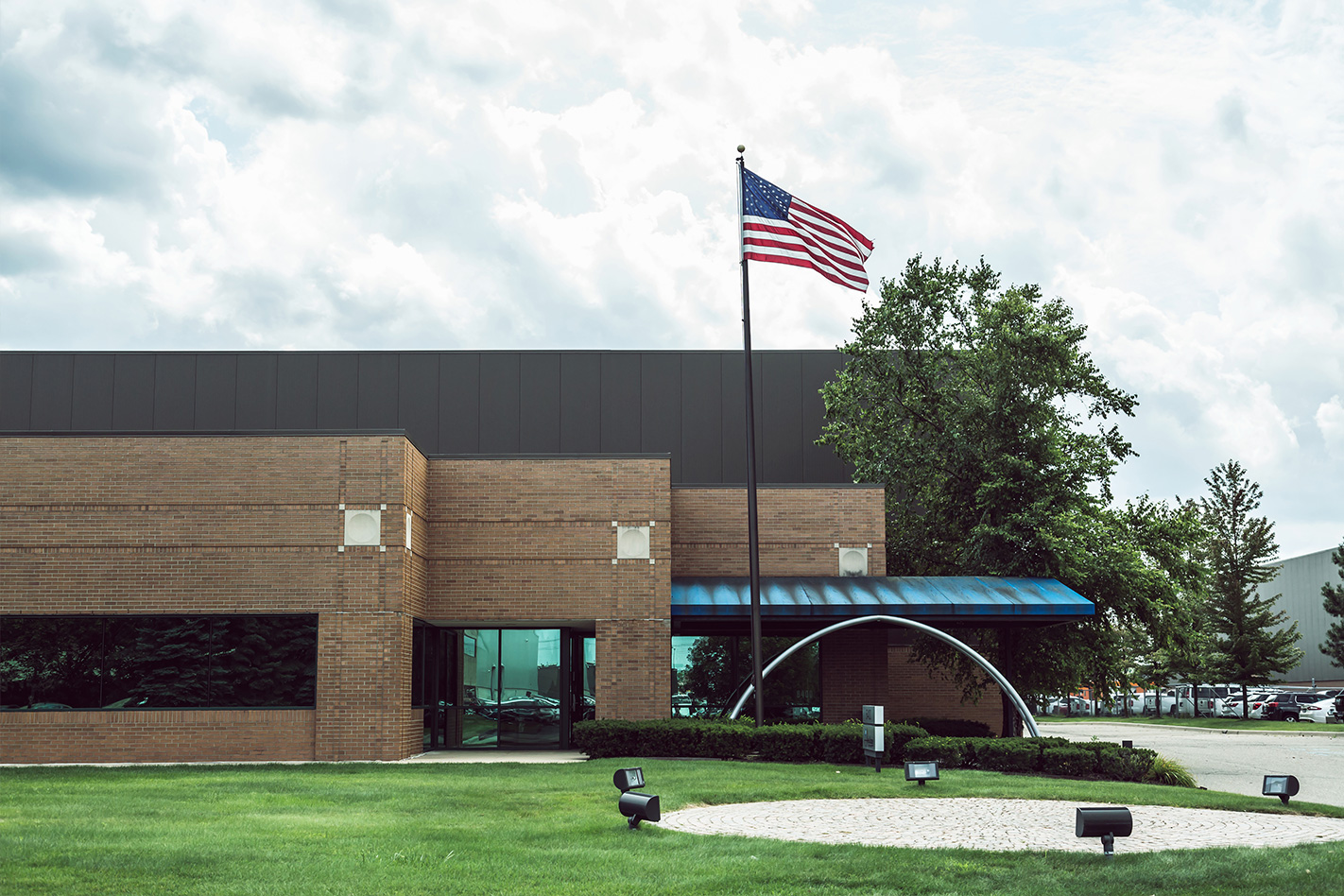
Greg Wallace leads a team of 11 full-time employees, some of whom are GM’s official archivists. However, since GM’s bankruptcy in 2009, the Heritage Center no longer includes in-house restorations or rebuilds beyond simple vehicle maintenance.
Any restorative work is now commissioned to speciality outsiders. From 2004 to 2009 the fleet was gradually cleaned out until, with the failure of the ‘old’ GM, auction house Barrett-Jackson sold off 115 cars for the company. Most were duplicate or less historically significant cars, but some unique models also went: the 2001 Buick Custom Blackhawk, a retro concept convertible, sold for A$683,000. Among many Corvettes to go were the first 1992 ZR-1 and the first 2006 Corvette ZO6, plus a 1904 Oldsmobile Touring Runabout and a 1998 Chevy S-10 drag truck; along with why-would-you-bother cars like a pair of Pontiac Azteks.
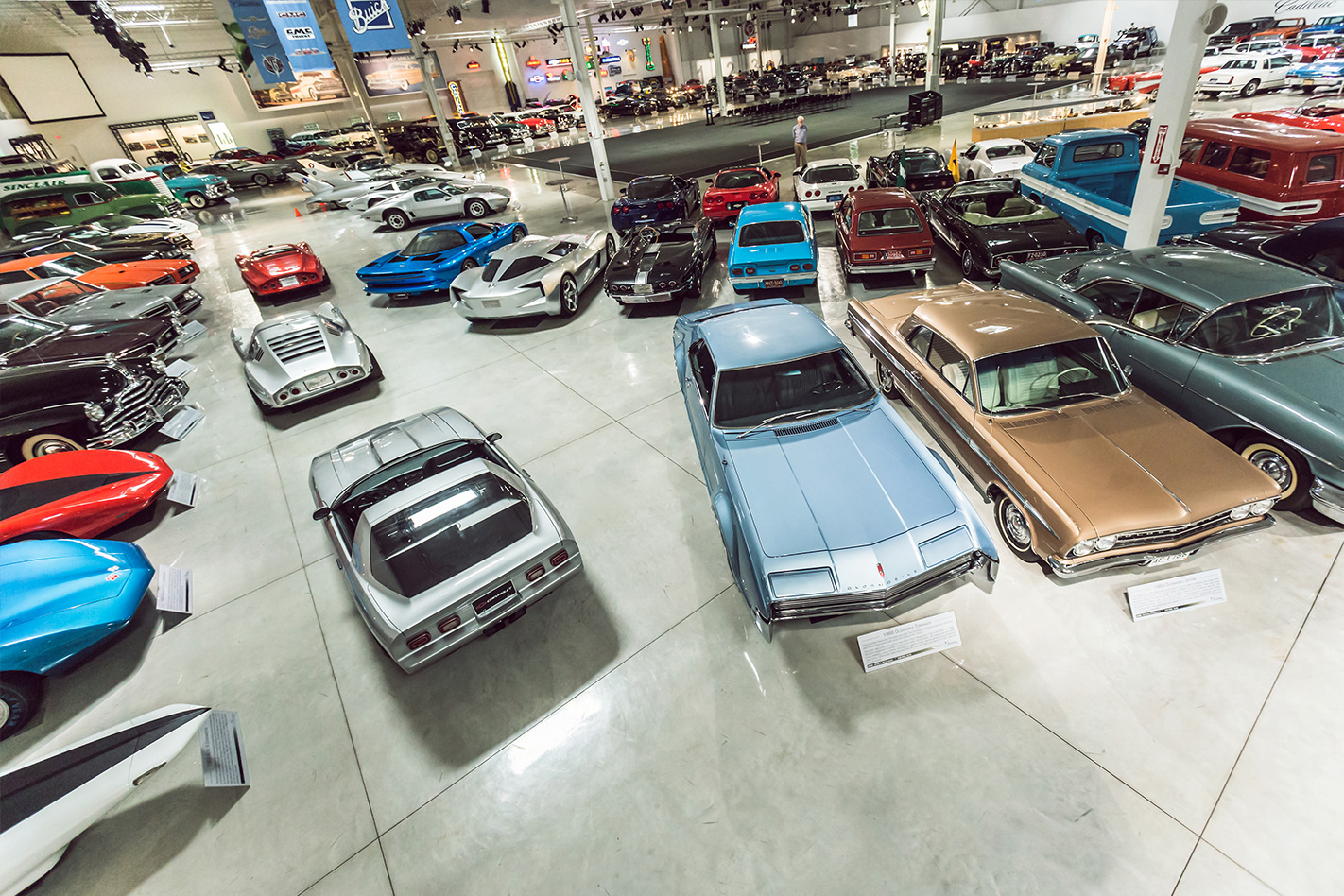
What’s left is the cream; the best of a wonderfully creative GM, in both a styling/design sense and in engineering terms, when the company easily led the automotive world. A trio of Chevy Astro concepts reveal the staggering breadth of analysis the Corvette engineers explored. The radically styled 1967 Astro 1 was based on the Corvair, Chevy’s rear-engined compact car; Astro II, from 1968, was a prototype for a long-discussed production mid-engined Corvette; while the 1969 Astro III comes from an era when GM was investigating gas-turbine engines as a possible power source.
Did you know that Buick introduced the first turn indicator lights as far back as 1939? The Roadmaster on display also has one of the first steering column gearchanges. You could also option twin spare wheels, one for each front mudguard, a common idea in the 1930s.
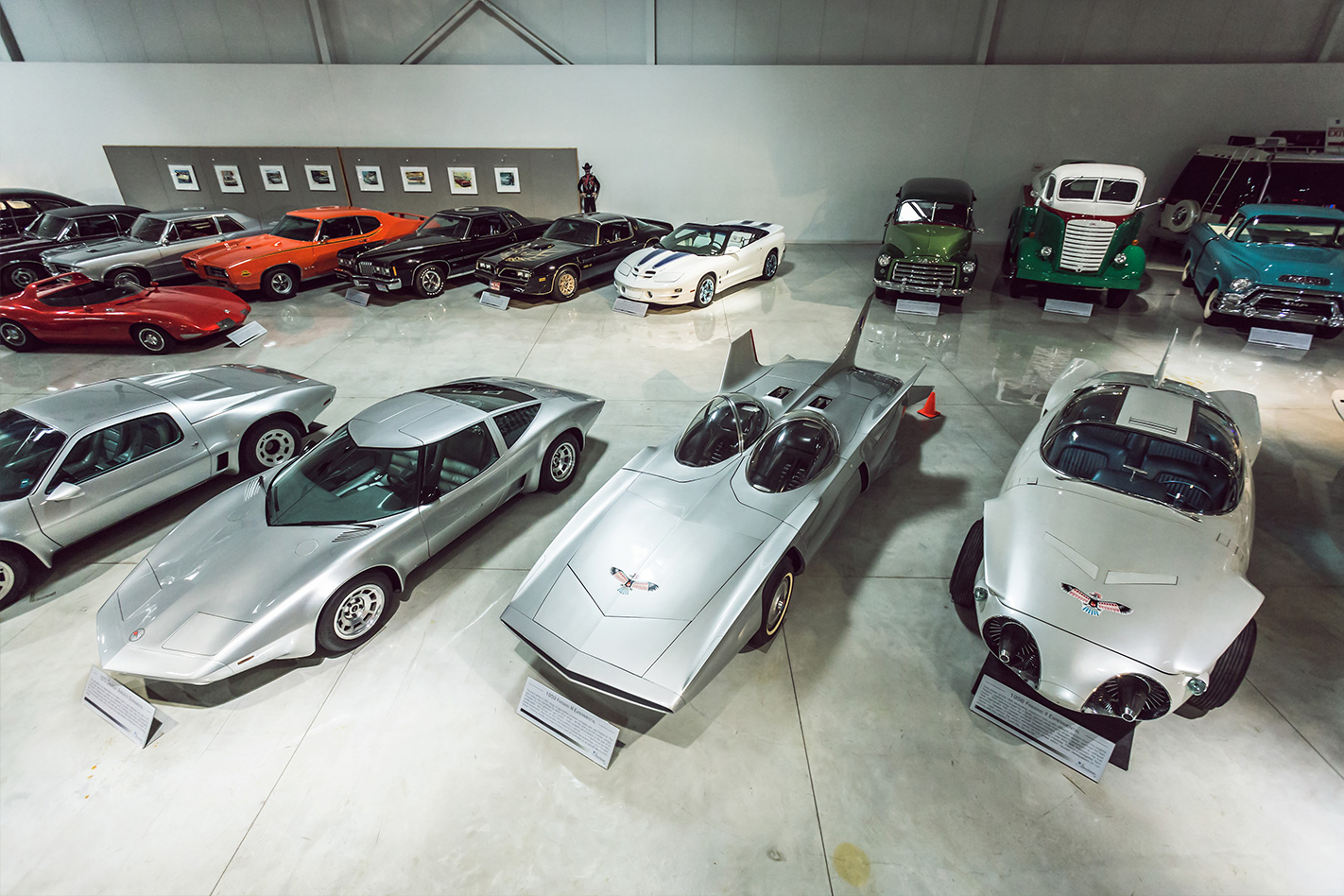
GM’s attempt to duplicate the Australian ‘ute’, a passenger-car-based pick-up, arrived with the 1959 El Camino, two years after Ford’s Ranchero. Chevy sold 23,837 El Caminos in 1959 and 15,779 in 1960, not sufficient to sustain the model. Based on the completely redesigned 1959 Chevrolet models, the El Camino is famous for its huge wrap-around rear window and for continuing the weird tail fins of the passenger models. Chevrolet tried again with the El Camino ute from 1964-1987 but eventually gave up when it became clear Americans preferred far bigger, conventional pick-ups.
Cadillac’s raft of beautiful concepts from the 2000s are well represented. Few remember that British designer Simon Cox operated a small advanced design studio for GM in England where he developed the Cien, a V12 supercar, and the styling inspiration for Caddy’s ‘Art & Science’ look. The 2003 Sixteen concept, a 13.6-litre V16 four-door concept, that sadly just failed to reach production, sits beside the 2011 Ciel concept convertible and 2013 Elmiraj as proof that truly beautiful cars are still possible. At least in concept form.
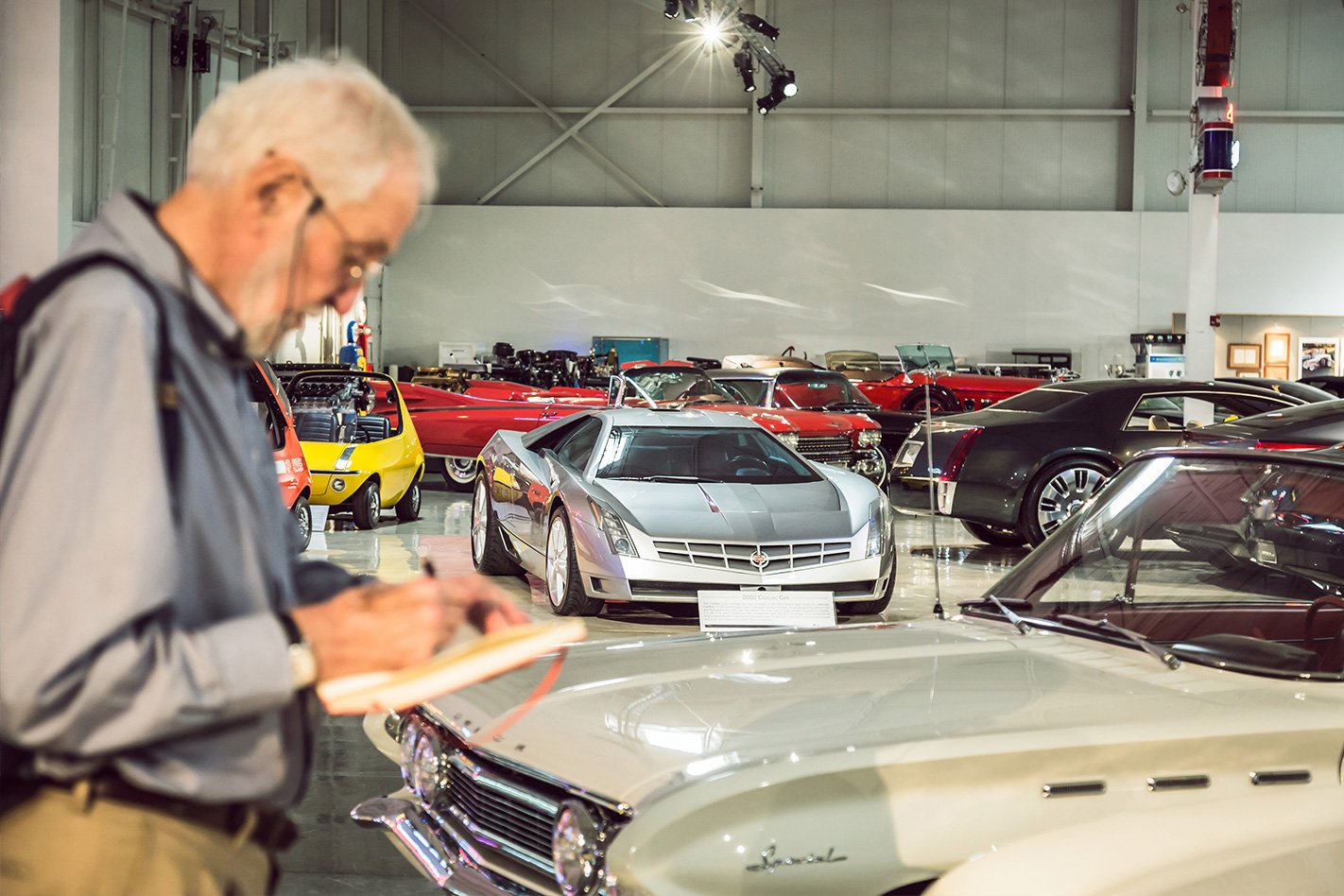
There is also at least one Holden. When former Holden CEO Mark Reuss returned to Detroit in 2009 he brought home a 1959 Holden FC Special sedan. How small it looks among the 50s and 60s Detroit iron.
Unfortunately, the Center is not open to the public and is generally reserved for GM corporate events and charity functions. However, group visits (minimum of 30 people) can be organised at a cost of US$10.00 per person ([email protected]). In all, the Center attracts around 25,000 visitors a year. The entire archive is in the process of being digitised, though the scanning process is so slow that they’ve only completed around five percent. “It’s never ending,” says Wallace.
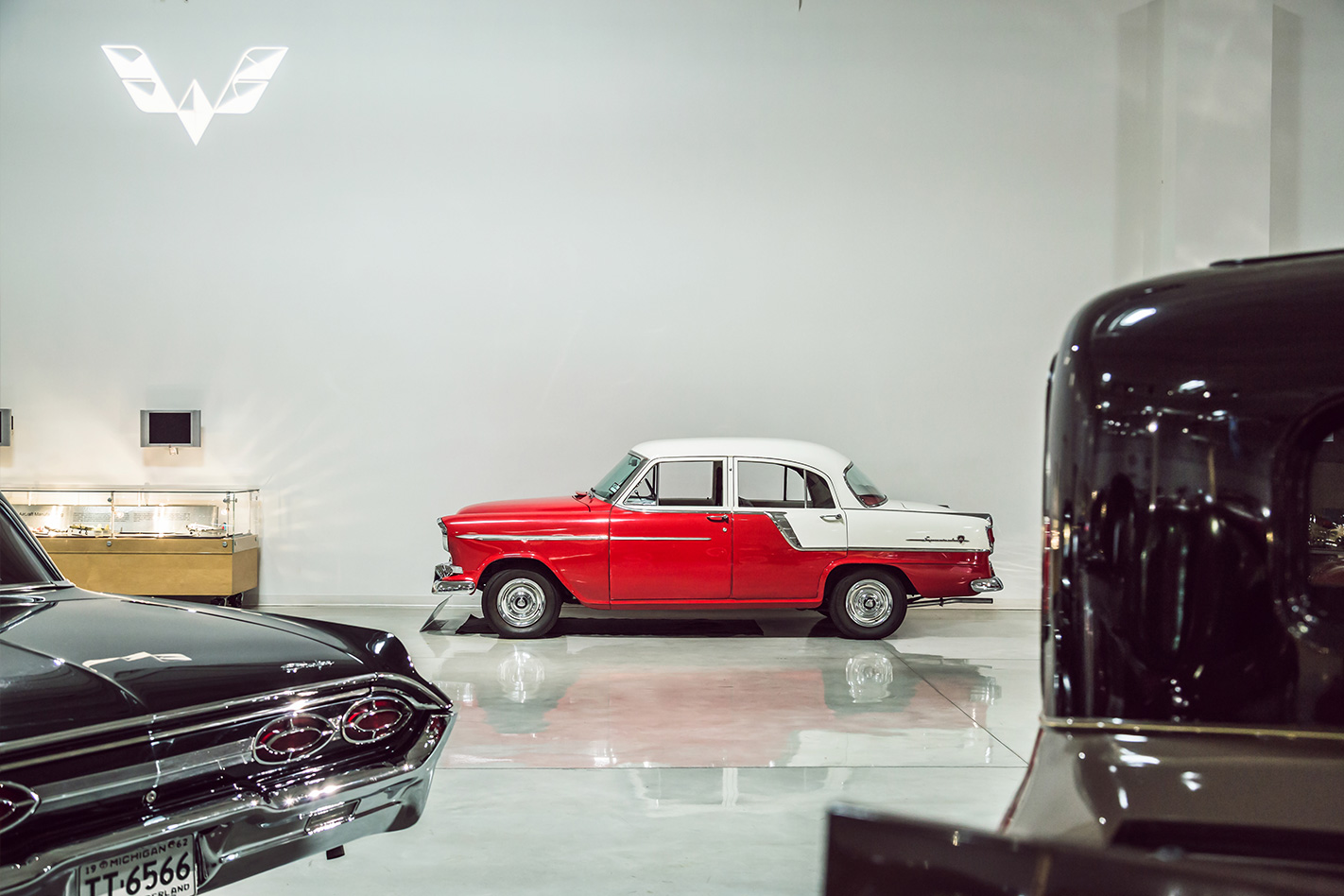
For the fertile mind of a Kettering, perhaps. For us car enthusiasts places like the GM Heritage Center are endlessly alluring and proof that you need to understand the past to appreciate tomorrow.





